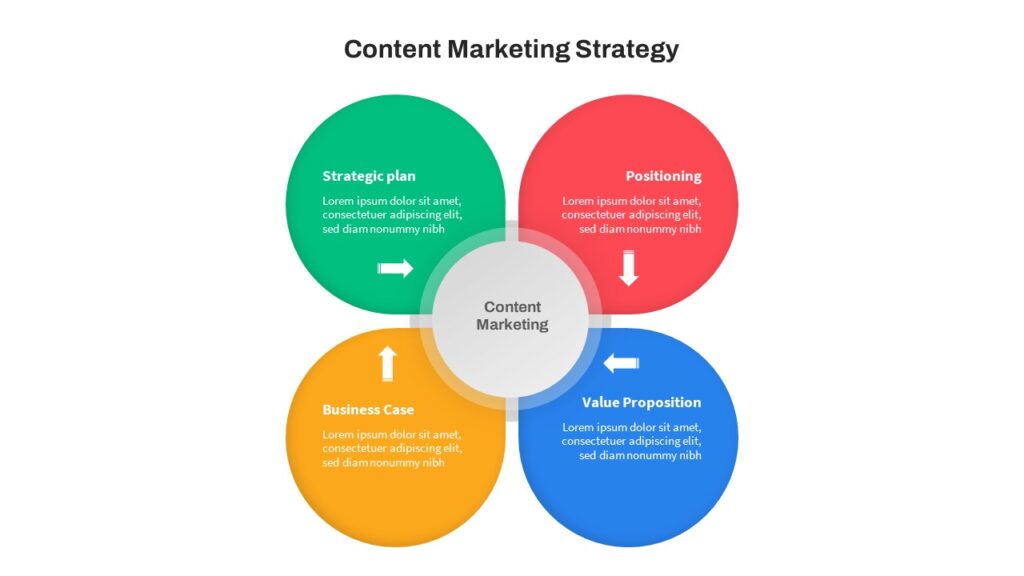Table of Contents
Let’s be honest—content marketing can feel like a never-ending to-do list.
Post on Instagram. Write a blog. Make a reel. Send a newsletter.
Rinse. Repeat. Still… no real traction?
You’re not alone. Most businesses put out content without a clear plan—and then wonder why it doesn’t convert.
That’s where a content marketing strategy changes the game.
This isn’t about throwing more stuff online. It’s about having a smart, repeatable system that helps you attract the right audience, build trust, and grow without constantly burning out.
Here’s a simple, real-talk guide to building a content marketing strategy that actually works.
Why You Even Need a Content Marketing Strategy
Building content without a plan is like building without a blueprint. That’s exactly what content creation feels like without a strategy—random pieces that don’t quite fit together.
A well-thought-out content marketing strategy gives you:
- Clarity on who you’re talking to
- A plan to consistently show up
- Content that leads people from awareness to action
- Less stress, more results
And no—it doesn’t have to be complicated. It just has to work for you and your audience.
Step 1: Start With the “Why”
Before you open a Google Doc or fire up Canva, ask yourself:
Why are you even creating content in the first place?
Here are a few honest goals people have:
- Get more traffic to your website
- Generate leads or email subscribers
- Sell a product or service
- Educate your audience
- Build trust or thought leadership
Your content marketing strategy should serve a purpose. Creating content ‘just because’ leads straight to burnout. Set one or two clear, measurable goals to keep yourself grounded.
Step 2: Know Who You’re Talking To (Really Know Them)
We’ve all heard it: ‘Know your audience.’
But here’s the thing—most people skip the part where they actually talk to them.
A human-first content marketing strategy starts with empathy. You need to understand:
- What keeps them up at night
- What they Google when no one’s watching
- What content makes them say, “This is exactly what I needed”
If you’re unsure, talk to real customers, read reviews, stalk Reddit threads—go where they hang out. Build that connection first, and your content will always feel personal and on-point.
Step 3: Audit What You Already Have
No need to start from zero if you’ve got something.
Chances are, you already have content—blogs, videos, social posts, or even old emails—that just need a little love.
Do a quick content audit:
- What performed well?
- What flopped?
- What can be updated or repurposed?
A good content marketing strategy isn’t always about creating more content—it’s about making the most of what you’ve already got.
Step 4: Choose the Right Formats (Not ALL Formats)
Let’s kill the myth: you don’t need to be on every platform or create every type of content under the sun.
Pick 2–3 content types you can do really well. Here’s a breakdown:
- Blogs = Great for SEO and long-form storytelling
- Videos = High engagement, especially for tutorials and behind-the-scenes
- Social posts = Awesome for quick tips, shares, and conversations
- Email newsletters = Perfect for nurturing warm leads
- Podcasts = Deep conversations and personal connection
- Infographics = Simplify complex ideas fast
Your content marketing strategy should play to your strengths. If you’re amazing on camera, do video. If you love writing, start a blog. Simple as that.
Step 5: Make a Simple Content Calendar
No one wants to create content last-minute, yet most people do.
That’s where a content calendar saves your sanity.
Here’s what it should include:
- Topics + working titles
- Formats (blog, video, post)
- Deadlines
- Who’s creating what
- Where it’s being posted
Use Google Sheets, Trello, Notion—whatever you’ll actually use. The calendar is the backbone of your content marketing strategy. Without it, things fall apart fast.
Step 6: SEO Isn’t Just for Robots
Let’s talk SEO—but in human terms.
You don’t need to be an expert. You just need to make content that people are looking for and want to engage with.
Do this:
- Use tools like Ubersuggest or AnswerThePublic to find real questions people ask
- Include natural keywords (like “content marketing strategy” 😉) in your headlines, URLs, and body
- Add internal links to related pages
- Write with your reader’s intent in mind (Are they learning? Comparing? Ready to buy?)
SEO is just another layer of visibility. Don’t obsess—just optimize.
Step 7: Promote Like a Real Human
You created something amazing—now what?
A good content marketing strategy doesn’t stop at “publish.” You’ve gotta distribute it.
Some real-world ideas:
- Share it multiple times across your social platforms (yes, more than once)
- Send it to your email list with a personal note
- DM or tag people who would genuinely benefit from it
- Turn one blog into 5 social posts or a short video
- Run small paid campaigns for high-performing content
And no, it’s not spammy if your content is actually helpful.
Step 8: Measure What Matters
If you’re not tracking, you’re just guessing.
What should you measure? It depends on your goals. Some key metrics:
- Blog traffic and time on page
- Email open and click rates
- Social engagement (likes, shares, comments)
- Conversion rates (leads, sales, signups)
- Backlinks and shares for authority
Your content marketing strategy should evolve over time. Use data to learn, test new things, and do more of what works.
Real Talk: You Don’t Need to Be Everywhere. You Just Need to Be Effective.
One of the biggest lies in marketing is that you need to post constantly on every channel.
Nope. You need to be useful and consistent where it matters most.
A focused content marketing strategy gives you:
- Clarity
- Direction
- Confidence
- Results
Start small. Be real. Talk to your audience like a human. That’s what wins.

